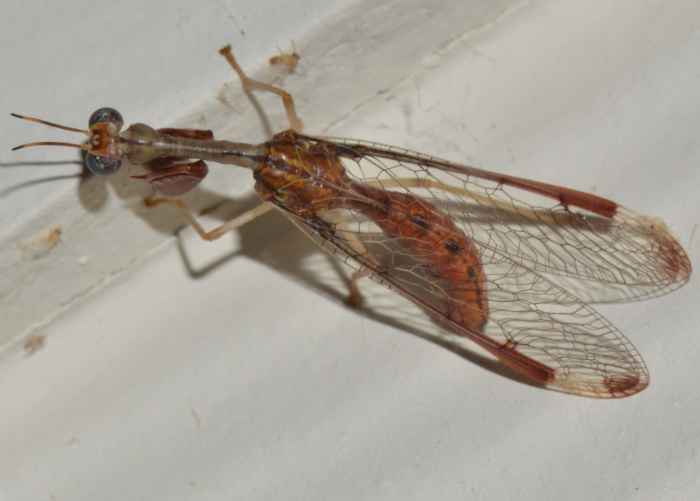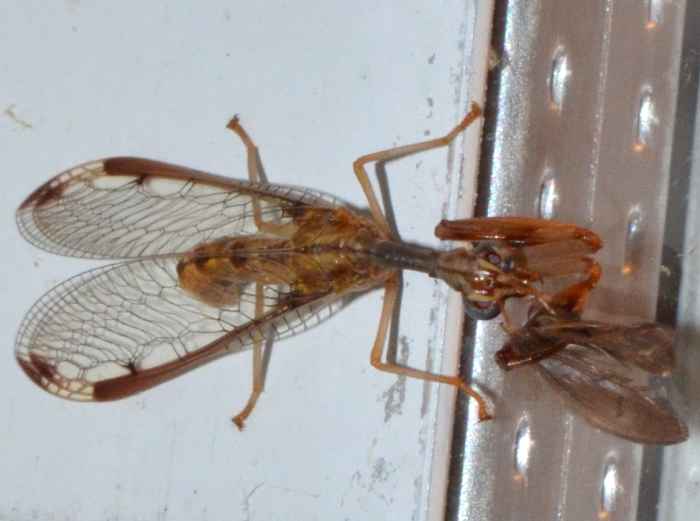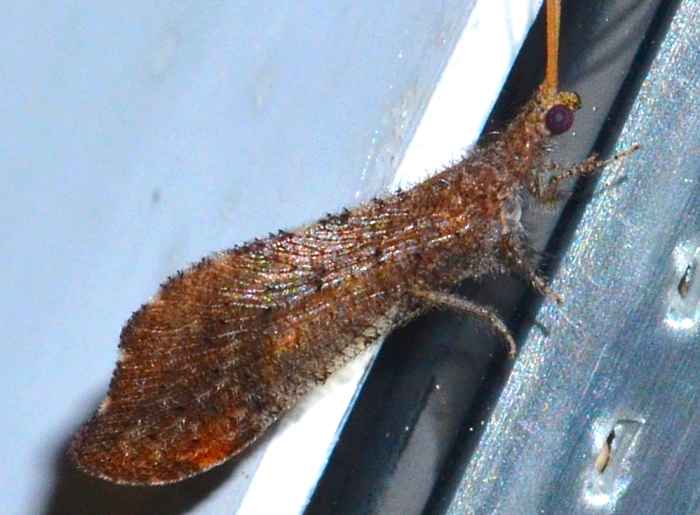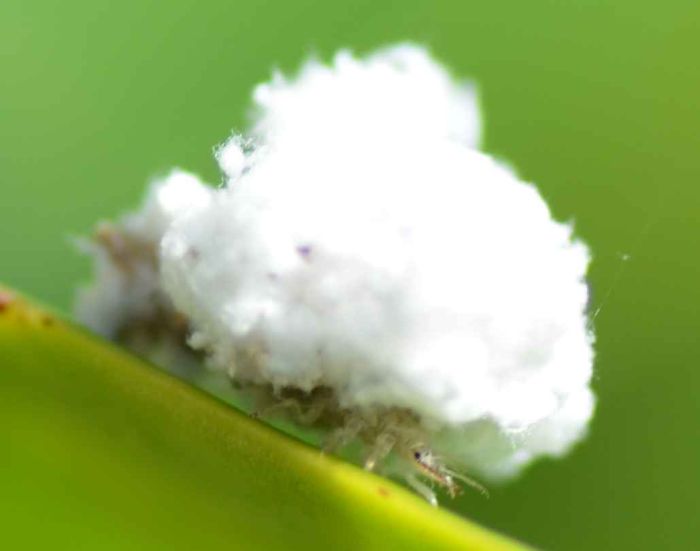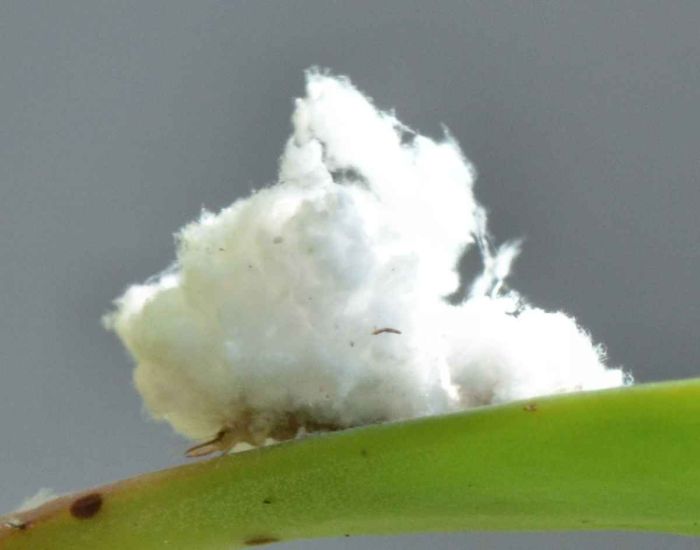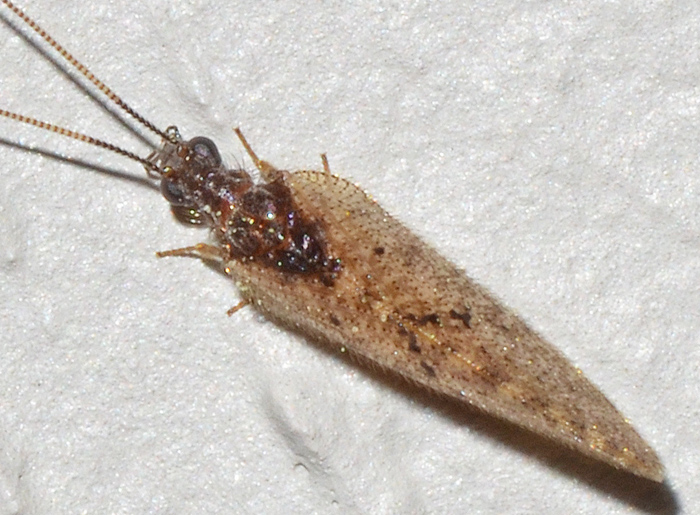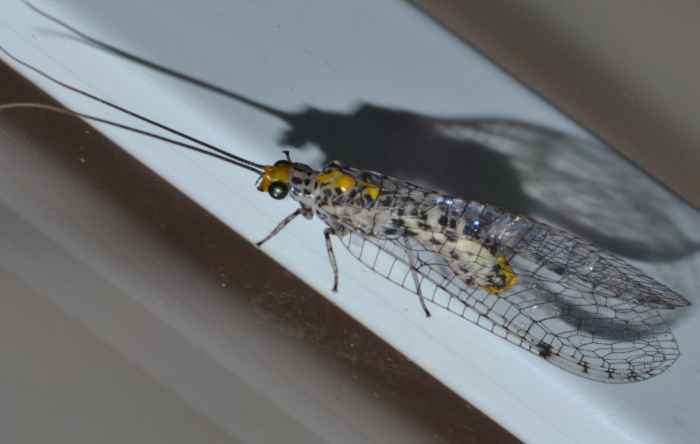 Abachrysa eureka. | What a beautiful insect. This lacewing is Abachrysa eureka. It can be found from Georgia and Florida to Arkansas and Texas. bug guide (this photo): http://bugguide.net/node/view/581234 | ||
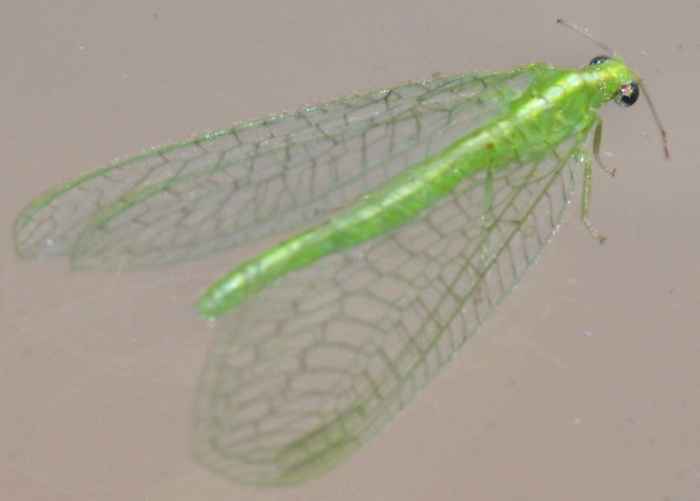 Chrysoperla sp.. | This green lacewing genus has eight species in North America. They are difficult to distinguish but can be readily identified based on their vibration signals used to attract mates. Members of this genus Chrysopa are very common in North America and Europe. Not the best photo but I will keep it for the time being. bug guide: http://bugguide.net/node/view/32027 | ||
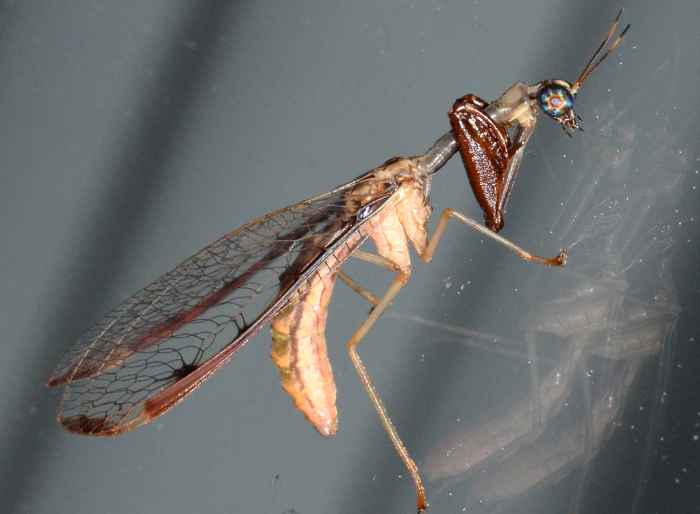 Dicromantispa interrupta (Mantisfly (nonspec.)). | A pretty bizarre insect. This is a Mantisfly (Dicromantispa interrupta). The species has a characteristic, interrupted dark patch on the border of its forewings. Mantisflies resemble lacewings, have raptorial forelegs, and a neck-like elongated prothorax. Their head is triangular with large eyes. The small photos were taken in September of 2011.
bug guide (large photo): http://bugguide.net/node/view/633852 wikipedia: http://en.wikipedia.org/wiki/Mantispidae bug guide (small photo): http://bugguide.net/node/view/581536 | ||
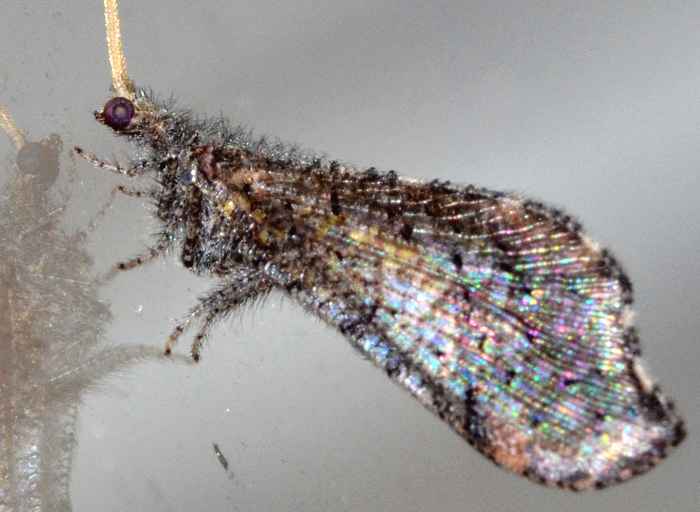 Lomamyia sp.. | The genus Lomamyia has four described (and three undescribed) species in Florida: L. banksi, flavicornis, hamata, longicornis. I found this astonishing statement on bugguide: "Eggs are stalked, laid on wood surfaces near termite nests. Larvae live with and prey on termites, using an immobilizing gas (containing an allomone) discharged from their anus." The small image dates 04/26/12.
bug guide (this photo): http://bugguide.net/node/view/628619 Neuroptera of Florida: http://www.fsca-dpi.org/Neuroptera/Neuroptera_of_Florida.htm | ||
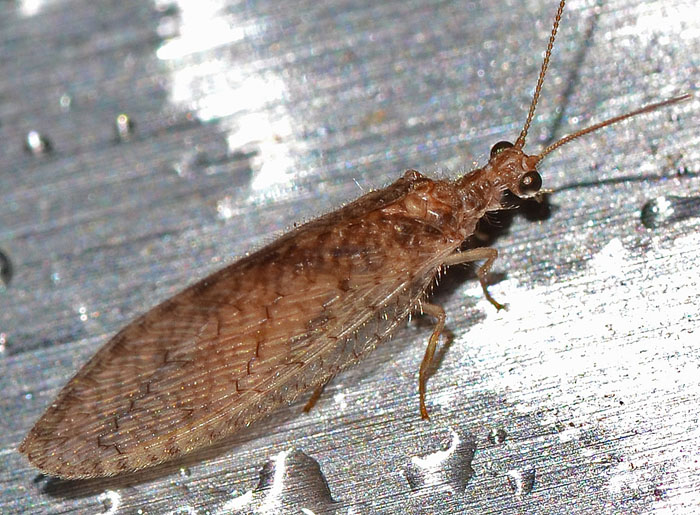 Micromus posticus. | This brown lacewing is probably Micromus posticus. I found it on our grill after a rain shower that had scared away most of the other bugs. Larvae and adults of Micromus feed on aphids and have been used in biological control programs. M. posticus prefers aphids infesting citrus groves, pecan orchards, cotton and potato fields. It is less prone to be parasitized by ichneumonid wasps than certain other Micromus species.
bug guide (this photo): http://bugguide.net/node/view/989867 T. W. Fisher et al. Handbook of Biological Control, 1999 : http://tinyurl.com/micromus | ||
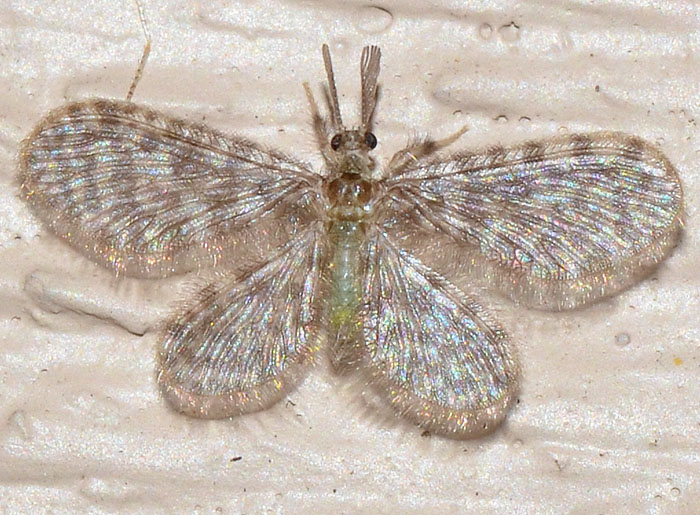 Nallachius americanus. | What a pleasing lacewing! That is at least the English name of this insect's family (Dilaridae). While it looks like a little moth, it belongs to an entirely different taxonomic order. Apparently it is a "very weak flyer, moving its wings in slow, floppy butterfly manner". bug guide (this photo): http://bugguide.net/node/view/1121191 | ||
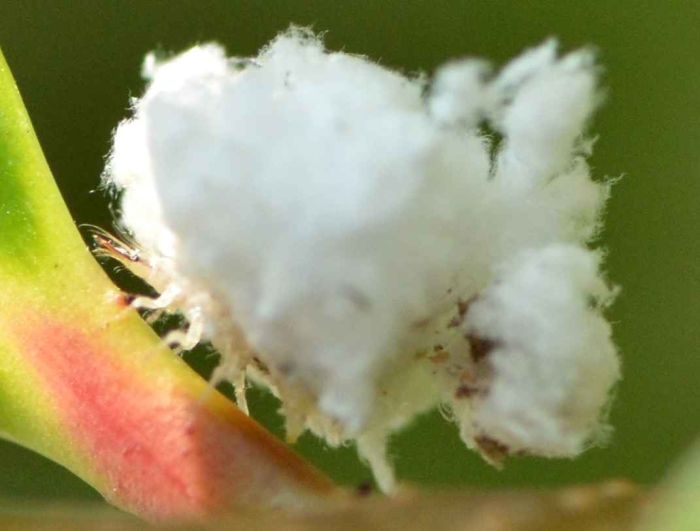 No Taxon - Debris-Carrying Larvae (Green Lacewing). | Hard to believe but this little cotton ball is a debris-carrying larva of a Green Lacewing (which has 14 different genera). Apparently the trash carried by these larvae is a protection against predatory lady beetles. My best guess is that the white material is the stuff left behind by immature leaf and/or plant hoppers.
 A short video is available on my YouTube channel. A short video is available on my YouTube channel.bug guide: http://bugguide.net/node/view/72302 | ||
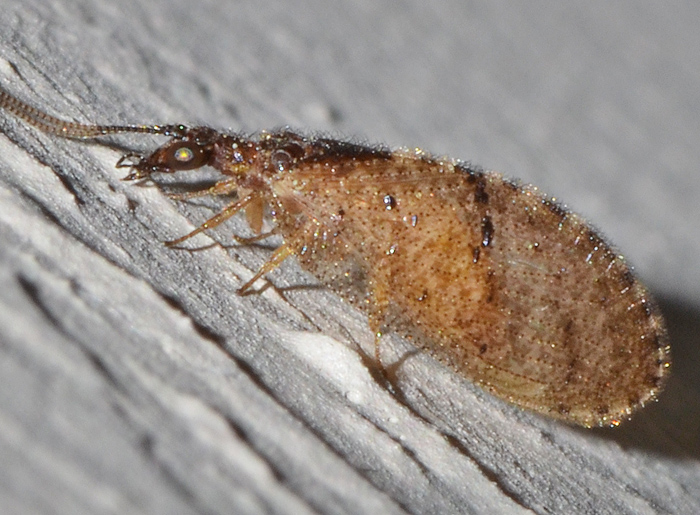 Sympherobius amiculus. | This fellow belongs to the Brown Lacewing family Hemerobiidae. Their members are predaceous both as adults and larvae prefering soft-bodied insects such as mealybugs, aphids, and also insect eggs. The genus has 17 species in the US. The small photo shows the same specimen.
bug guide (these photos): http://bugguide.net/node/view/1204757 UF: http://edis.ifas.ufl.edu/in382 |

